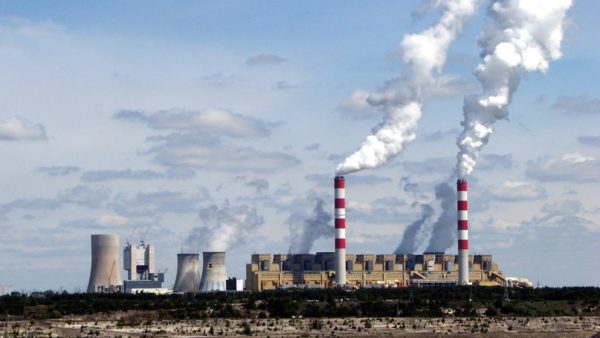New Delhi is to fast-track the construction of roads along its border with China despite the steadily increasing tension between the two countries, including a brawl fought with clubs on Monday that left a reported 20 Indian soldiers dead.
Unconfirmed Indian sources said 40 Chinese soldiers died.
India has decided to bring forward the second phase of the India-China Border Roads project, under which 32 highways will be built along the Line of Actual Control (LAC) that separates the two countries, reports the India Today website.
The plan to send about 1,500 extra workers to the construction sites was reached after a meeting chaired by BR Sharma, the secretary for border management, and attended by officials of Border Road Organisation, the Indo-Tibetan Border Police, the Indian Army and Central Public Works Department.
If this is true – the story comes from unnamed sources in India’s Ministry of Home Affairs – it signals no willingness on the Indian side to back down, as China reportedly did after the 2017 Doklam clash, when India deployed 270 troops armed with bulldozers to prevent the construction of a road on land claimed by Bhutan.
Anyone unacquainted with the history of road building in the area would be forgiven for wondering why it has the potential to cause this degree of friction between the world’s two largest nations over an area that does not contain huge oil deposits or similar mineral riches.
The answer is that the Kashmir and Aksai Chin regions, which both countries administer rather than own, acquired a symbolic importance for India dating back to the founding of the country, when it laid claim to both.
For its part, China has had an interest in Ladakh since the 19th century, and even attempted to take it by force in 1841, leading to defeat in the Sino-Sikh war. Nowadays, it is the site of China’s main road link between Xinjiang and Tibet.
Diplomatic exchanges
India’s decision to accelerate road construction follows a vicious battle fought on Monday, 15 June, between troops of the two nations in the Galwan Valley in Ladakh, which runs between the Indian-administered state of Kashmir and the Chinese-administered region of Aksai Chin.
The clash – fought with clubs since the soldiers are not allowed to carry guns within 2km of the border – left at least 20 Indian soldiers dead, including a colonel. According to unconfirmed Indian sources, around 40 Chinese were also killed.
On Wednesday, Prime Minister Modi made a televised address in which he said: "India wants peace but when provoked, India is capable of giving a fitting reply, be it any kind of situation."
On the same day, Subrahmanyam Jaishankar, India’s external affairs minister, warned Wang Yi, his Chinese counterpart, that the "pre-meditated" attack would have a "serious impact" on bilateral relations, according to India Today.
According to Jaishankar, the clash was caused by the Chinese, who tried to erect "a structure" inside Indian territory, which he said "reflected an intent to change the facts on the ground in violation of all our agreements to not change the status quo".
Reports published on various sites on Thursday mention an "ambush" by Chinese troops, and several reproduce photographs supplied by Indian army sources showing a nail-studded club, allegedly used by the Chinese.
The Chinese official press has taken a more conciliatory line, with the Xinhua agency quoting Wang on the need to "strengthen communication and coordination" and "jointly maintain peace and tranquillity in the border areas".
However, Global Times, the daily newspaper of the Chinese Communist Party, went into more detail on the wider implications of the dispute. In an editorial published on Wednesday, it quoted Wang as saying "it was the Indian side that intentionally provoked and started a violent attack" and that "Indian society should wake up from its geopolitical fantasy". It added that China was "committed to friendship with India" and respected it as a "regional power", implying, perhaps, that China is now a world player.
Dangerous roads Â
The reported decision to accelerate India’s road network in the region signals its determination to catch up with China, which has a more developed network on its side of the LAC, based on the G219 national highway.
The G219 was built between 1951 and 1957, and the building of a section through the disputed Aksai Chin region was one of the causes of the 1962 war between India and China. It was paved with asphalt to become an all-weather highway in 2013.
Aaditya Dave, a research analyst at the UK’s Royal United Services Institute (RUSI), told Wired magazine that India had recently become concerned over the speed with which China could reinforce its position in the Galwan, whereas Indian troops "had to walk in a very inhospitable terrain".
This led to the building of a high-capacity, all-weather road parallel to the Line of Actual Control – the provisional border agreed at the end of the 1962 war – the main section of which was inaugurated in April last year. This will eventually connect Leh, the capital of Ladakh’s capital, with the Daulat Beg Oldi air base, which is adjacent to Chinese territory.
In a RUSI analysis of the clashes, published a week or so before the latest escalation, the authors speculate that the Chinese moves are part of a strategy of "selectively and sequentially targeting individual members of what it views as a nascent encircling alliance", including Japan, Australia and others.
This view is lent some support by the Global Times editorial, which criticised the Modi government’s closer relationship with the US, and suggested China might be a more valuable economic ally.
"We noticed that in recent years, favourable opinion toward China has rarely been heard from India, but voices that cater to the values-based alliance and the Indo-Pacific Strategy are becoming louder," it said. "Can these provide strong strategic support to India’s desire to rise?
"These concepts dominated by the US implicitly target China, and Washington needs a country like India to spearhead attacks on China."
For its part, India may also have concerns of encirclement by China’s Belt and Road infrastructure initiative as it watches Chinese influence grow in Pakistan and Sri Lanka, not to mention the Maldives.
What it means for construction
The clash has led to calls for the boycott of Chinese goods, with the Confederation of All India Traders recently publishing a list of 450 categories of products made in China that its 40,000 trade association members will no longer sell.
Other commentators have pointed out on Thursday that a boycott would be hard to implement in practice, since 75% of India’s smartphones and 67% of its electronic components and pharmaceutics are made in China.
For Chinese companies in the construction sector, the rush of anti-Chinese feeling may put a number of contracts in danger.
One picked out by the Indian press is Shanghai Tunnel Engineering’s $150m deal to build a 5.6km stretch of the Delhi to Meerut Regional Rapid Transport System.
The Chinese company had reportedly been awarded the deal last week, after it entered the lowest bid, however yesterday the Indian government said the deal had "yet to be finalised".
Another potential victim of the conflict is China Railway Eryuan Engineering Group, which has just entered a bid for Corridor 4 of the Chennai Metro.
Meanwhile, some Chinese companies have already been frozen out.
On Thursday, the Beijing National Railway Research and Design Institute lost its $60m work package on the Dedicated Freight Corridor that India is building between Delhi, Mumbai, Chennai and Howrah, ostensibly for "poor progress" on the section between Kanpur and Mughalsarai.
Whatever happens next depends on events. India’s rush to build more roads, and the evident unwillingness of China to accommodate them, suggest that a difficult period lies ahead.
Possibly the best that can be hoped for is that, in the absence of further clashes before winter, the dispute will eventually cool to form another of the grudges that has marred Sino-Indian relations since the 1962 war.
One day, India and China may connect their roads and improve their communications, but not in the foreseeable future.
Image: The G219 National Highway, which runs along China’s southern border, is the highest in the world (Yuen Yan/CC BY-SA 2.0)
Further reading:
- Road building in Kashmir leads to fears of military clash between India and China
- China, Nepal mull controversial plan to build Kathmandu rail link
- India to spend $3bn on strengthening road network on Chinese border
- China steals a march on India with 400km Iranian rail scheme
- India beats China to $1.6bn Bangladesh power plant










